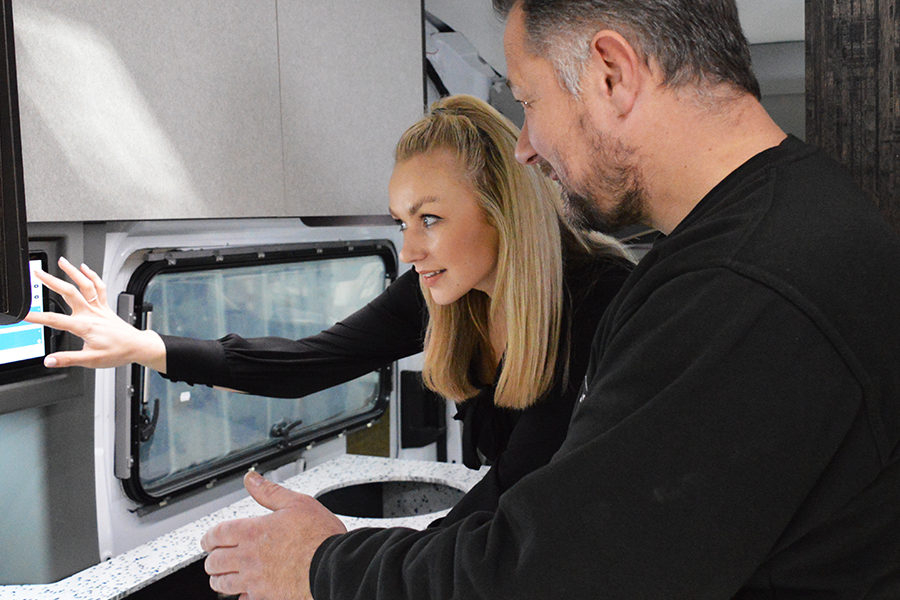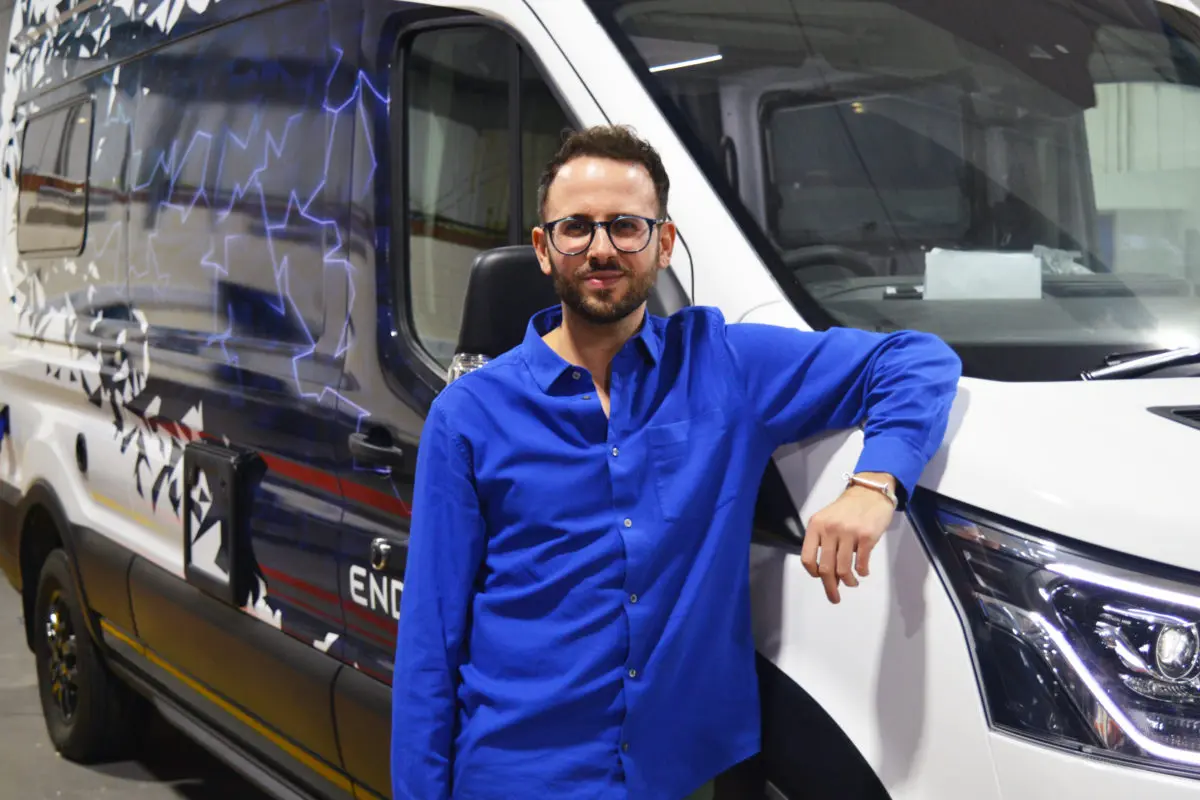Developing Endeavour EV with Bailey Lead Designer Chloe Bartlett

Chloe, how was this project brought to the table?
Conversations with Ford started back in 2021. Ford had produced a number of electric E-Transit vans and was giving Bailey the opportunity to convert one of them into a van conversion as part of their research and development. Ford is one of Bailey’s strategic partners and we hoped that, by working on this project together, this would create a great talking point to increase interest and awareness in the future use of e-vehicles in the leisure market.
What were the main design challenges you encountered?
The biggest design challenge we faced was not being able to drill directly into the main floor due to the location of the vehicle battery. This affected where we would normally run our water and power through the van. In order to overcome it, we had to create a 45mm false floor up so that we didn’t interfere with the main floor and the E-Transit battery.
Another key challenge was providing a heating source in replacement of the traditional gas heating system. We decided on an air conditioning unit which fitted into the ceiling and still allowed daylight to shine through. We are aware that an AC unit isn’t the most functional source of heat for a leisure vehicle, particularly in the winter months so we are working with our heating suppliers on alternative electric heating systems for the future.
The Ford E-Transit is not the only innovative element in this van. A lot of thought has been put into this concept. For example, the materials used are quite unique…
That is correct – we really wanted the sustainability message of the all-electric vehicle to be mirrored in the interior of the van. For this reason, we started with a nature inspired mood board we called ‘Relaxed Rainforest’ where we started to build up the forest like finishes and textures you can see in the Endeavour EV. We then decided to take it a step further by sourcing as many recycled materials as we could for the interior finishes and fitting. The material selection was a crucial part of the design process and played a vital role in portraying the sustainability message we wanted to deliver with the Endeavour EV.
For instance, our kitchen worktop material is a ‘Polygood’ material which is a surface material made using old kitchen appliances and refrigerators- ‘cool- I know! Then the black handles used throughout the van are made using reused ocean plastic. The flooring is made from pure cork which not only makes it water resistant but sustainable too. Then even our boucle style upholstery is made using 100% recycled polyester.


This concept vehicle is based in the acclaimed Endeavour B62 panel van, but the layout has been configured to provide opportunity for mobile working…
Yes. When we started this project, we were going to replicate the layout configuration of the Bailey Endeavour B62, but very soon we realised this was the perfect opportunity to innovate with a new lounge configuration that adapts to the working from home requirements in the modern world.
The Endeavour EV offers a rear lounge with a modular seating system that creates three different seating systems. The first is the Day mode which offers a ‘chaise longue’ shaped sofa and allows you to enter or exit the vehicle throughout the rear and side door comfortably throughout the day. It also offers the perfect seating arrangement for use of the electric drop-down TV that can be lowered using a switch in the TV unit. The second configuration enables the Office or Eating mode. The modular seating creates an L shaped sofa allowing people to eat comfortably sat around the table and also a designated desk area for working. And finally, the Night mode configuration allows the bunks to be arranged to become a generous double bed.

The lack of gas must have been challenging when designing the kitchen, with most traditional caravans and motorhomes relying on gas for the operation of the hob and oven and even the fridge…
All of the appliances in this vehicle are fully electric. We know some of our current suppliers already offer all electric cooking products that we could look to source if we were to put this Endeavour EV into production in the future. As this particular van was designed as a concept vehicle, it must be plugged into a 230V power source to make full use of all of the appliances and technical features together. However, we are already in discussion with our suppliers to look at ways in which we can offer an off-grid experience with the use of all of the features by the time full electrification arrives to the leisure market.

Lighting has also been an important element in this project. What learnings did you take from this, and how will they transfer to Bailey production models?
After completing an interior lighting design course last year, I really wanted to implement some of my learnings with the help from our suppliers to push the boundaries of lighting design in a leisure vehicle as much as possible. The Endeavour EV has a voice controlled, colour changing temperature lighting system which also has zoning capabilities. This essentially allows you to operate your lighting by voice command and switch between task, general or accent lighting throughout the van and alter the light temperature giving you a cool or a warm lighting experience.
The voice controlled commands are operated through Alexa, so you are also able to enjoy all the Alexa capabilities such as listening to Spotify or the radio.
We will now be looking to implement what we have learnt from developing the EV lighting and incorporate some of these features into future Bailey product ranges.

To finish it off, Endeavor EV was wrapped up in graphics that reflect the electrification theme…
My colleague Tony is the Bailey designer that created the Endeavour EV graphics scheme. Tony wanted to emphasise the electric and futuristic message by highlighting the transition from the front of the van to the rear via a geometric explosion of colour and light coming from within the graphics.
Unlike the graphics in a traditional Bailey caravans or motorhomes, the Endeavour EV was fitted with a graphic wrap that took a total of 16 hours to fit!


What did you enjoy the most about this project?
It was great to have complete creative freedom from start to finish on this project. As this was a concept vehicle, it meant the boundaries of designing a panel van could really be pushed, which taught us many lessons along the way. There is a lot more you need to consider when designing for production, however it has been a worthy exercise to see what we can achieve.
We are very proud that we were able to create a concept vehicle that delivers an important message to our industry not only about the future of leisure vehicles but also with the use of more sustainable materials. It has definitely given us a head start on what the future may hold for the leisure industry.

Previous
News & Events
Next
Endeavour Electric Campervan



